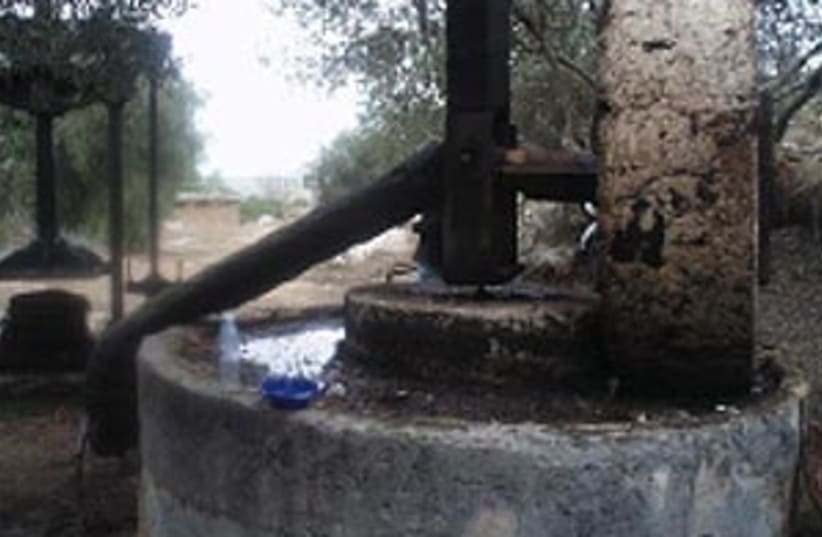The Hasmonean victory at Emmaus was won in the second year of a three-year Jewish revolt against Greek rule over the Holy Land. Upon learning of the Greeks’ plan for a surprise nighttime attack, the Hasmoneans, led by Judah the Maccabee, turned the tables on their unsuspecting opponents. Returning to their base at Emmaus following a failed attack on the Maccabee camp, the Greeks were accosted by the Hasmoneans. Despite their numerical advantage, the Greeks sustained heavy casualties in the ensuing battle, bringing about a Maccabean victory that is considered fundamental to the Hasmoneans’ eventual topple of Greek rule in Judea in 164 BCE.
A few miles farther along the Latrun road toward Modi’in, road signs specifying the proximity of nearby towns and settlements bearing names such as Hashmonaim, Maccabim-Re’ut and Modi’in signify arrival in the Hasmonean heartland that is the Ayalon Valley.
At Umm el-Umdan, an Arab village close to the southern entrance of Modi’in, excavations have unearthed the remains of a Hasmonean village including a row of houses, a marketplace, a ritual bath and a synagogue. The discovery of the synagogue, the only remnant still exposed and accessible for public viewing, has led some archeologists to propose that Umm el-Umdan is the site of ancient Modi’in, the hometown of revolt leaders and priestly Hasmonean family.
They claim the synagogue is evidence of the settlement at Umm el-Umdan’s importance. Yet others argue that the remains of ancient Modi’in can be found at Titura Hill, the site of a spectacular Crusader-era fortress at the edge of modern-day Modi’in. Excavations at the fortress have revealed remnants from various periods including those depicting a Hasmonean-era settlement. Proponents of the Titura Hill theory claim that the settlement’s vast dimensions are a point in the site’s favor as the Hasmoneans often constructed large structures to demonstrate their importance.
According to Amit Re’em, Israel Antiquities Authority archaeologist for the Modi’in district, the above assertions should be viewed with caution. ’As signs declaring the names of the unearthed settlements were not discovered, any evidence that either location is more likely to be that of ancient Modi’in than any another Hasmonean village is purely circumstantial... and thus such claims are no more than speculation.’
Another relevant site in close proximity to Modi’in is that of The Maccabees’ Graves, which can be reached via Route 443 (after Shilat Junction and before Moshav Mevo Modi’im, when coming from Jerusalem). The graves, which are carved into rocks and covered by large boulders, were initially discovered by a group of Jewish schoolchildren and their teacher on the eve of Hanukka 1907. The students encountered a local Arab shepherd while attempting to locate the graves. They inquired as to their whereabouts upon which the shepherd escorted them to a site he claimed housed the ’The Jews’ Graves.’ On arrival the students lit the first Hanukka candle and danced at the graves, thereby initiating a thus-far unbroken Hanukka tradition.
According to Re’em, however, archeological findings have disproved the authenticity of the children’s site. ’Excavations close to the nearby Arab village of Midya during the 19th century uncovered findings suggesting that site houses the Maccabees’ graves,’ he explained. ’The discoveries [which have since been concealed] included seven triangular tombs corresponding with first-century Jewish historian Josephus Flavius’s description of the Hasmonean family’s pyramid-shaped graves — all seven of which, he claimed, were erected in the same place, as is the case here.’
An additional factor in Midya’s favor, Re’em says, is that it overlooks the sea, which is another of Josephus’s specifications for the Hasmonean grave site. ’Even if the graves aren’t located at Midya,’ he concludes, in light of Josephus’s writings along with other evidence it is unlikely that the traditional site is the authentic one.’
Archeological conclusions, however, have not deterred the continuation of the graveside tradition, a factor, which according to a guide with the Genesis 2000 tour-operating company that specializes in the Ayalon Valley, may be due to the collective need to identify with a tangible point of reference. ’Symbolic association often becomes more important than the concept being commemorated? the Western Wall is just one of many examples of this phenomenon,’ he explains. ’People need a place to direct their energies and in this case the children who discovered the graves were pioneers of a new Zionist ideology looking for strong Jewish heroes to whom they could relate from a tradition which stressed the might of God over that of man? and their sentiment is one modern-day Israelis can still relate to.’
Having contended with historical and archeological disparities, light relief is available to Maccabee trail followers in the form of reconstruction of Hasmonean life at Neot Kedumim. Visitors to the biblical nature reserve, located between Modi’in and Ben-Gurion Airport on Route 443, can gain insight into the daily lives of Hasmonean-era inhabitants of the Holy Land through a variety of activities including picking and crushing olives into oil, modeling ancient-style lamps out of clay, drawing water from a restored cistern and working a water-powered flour mill.
Similar options are available at the family-oriented Hasmonean village close to Moshav Shilat. Here, guests are transported to the Hasmonean era through interactive workshops and animated performances.
The picturesque Beit Horon settlement just past Givat Ze’ev on the Jerusalem-Modi’in highway makes for an idyllic location to picnic at the conclusion of an action-packed day. Here visitors can take in their surroundings — the site of yet another Hasmonean battle — at ground level or marvel at the attractions from an observation deck.
For those hoping to encounter Maccabee life closer to home, the excavations in Jerusalem’s Old City offer insight into the lives of Hasmonean-era residents of the Holy City. Parts of a Hasmonean-era citadel can be admired from the Cardo while the remnants of Maccabee houses and ritual baths at the atmospheric Davidson Center excavation site make for a worthwhile visit.
| More about: | Ajalon, Maccabees, Judas Maccabeus, Hasmonean |
